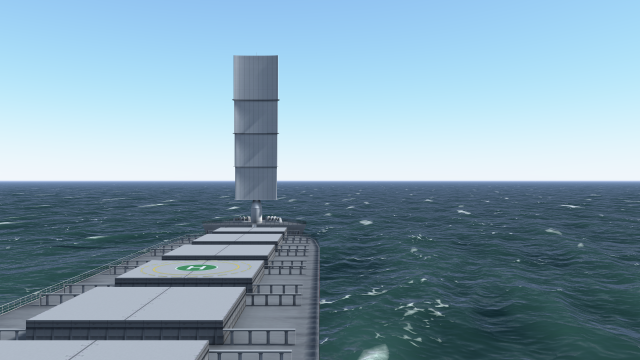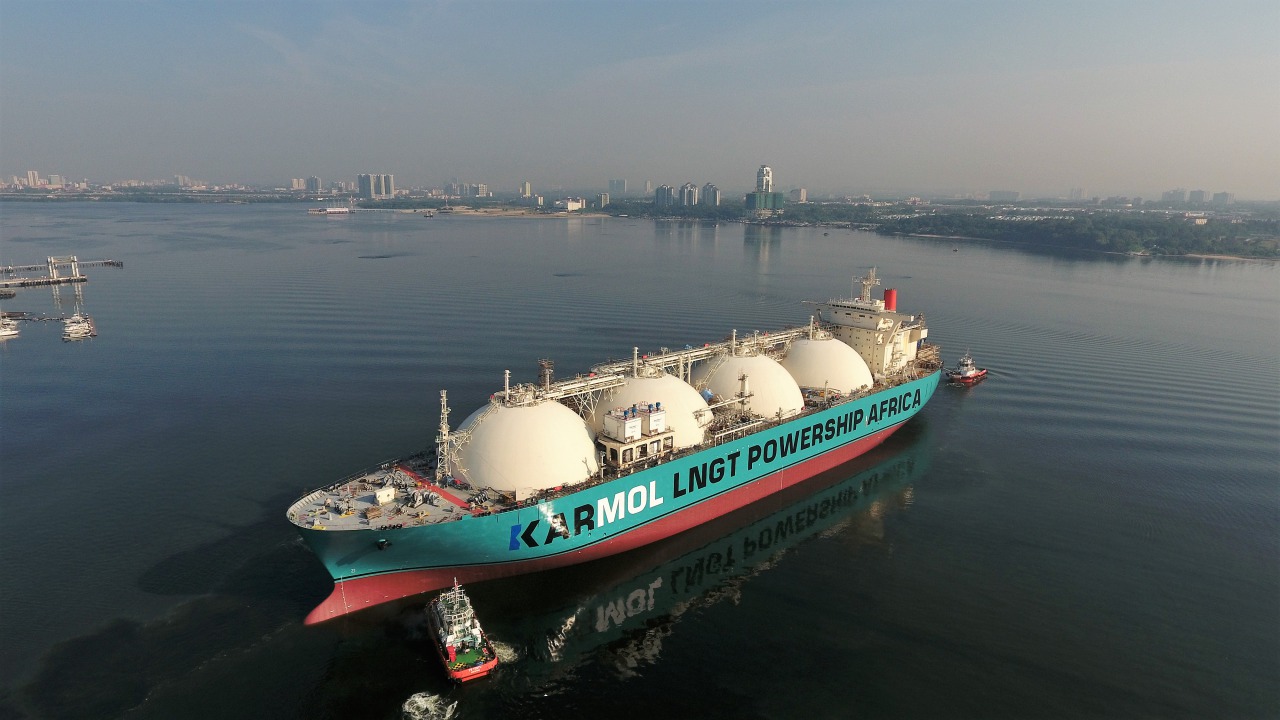GHG reduction using wind energy ~Wind Challenger Project~
Mitsui O.S.K. Lines, Ltd.
Outline
The "Wind Challenger Project" is a R&D project for a ship to utilize wind energy for propulsion with innovative telescopic hard sail.
Mitsui O.S.K. Lines, Ltd(MOL) is working on the target stipulated by International Maritime Organization (To reduce shipping's GHG emissions by at least 50% by 2050 compared to 2008). GHG emission reduction target can not be achieved by single energy saving technology. Our Wind Challenger creates environmental benefit of adding a new layer of energy-saving technology, without interfering with other energy-saving systems.
The project members including MOL will continue to move toward implementation for the Wind Challenger Project, with the aim to launch of a newbuilding vessel equipped with a hard sail. That would reduce the vessel’s GHG emissions by about 5% on a Japan-Australia voyage, and about 8% on Japan-North America West Coast voyage. The long-term goal is to develop a widely accepted solution to achieve the IMO target in combination with other measures to reduce GHGs by equipping vessels with multiple sails.
Description
The "Wind Challenger Project" is a R&D project for a ship to utilize wind energy for propulsion with innovative telescopic hard sail.
The project started in 2009 as JIP named "Wind Challenger Project" led by The University of Tokyo, and from 2013, the team has been chosen to receive "Subsidy for Next-generation marine environment-related technology research" by Ministry of Land, Infrastructure, Transport and Tourism. In January 2018, MOL and Oshima Shipbuilding took over this project and reorganized for the implementation phase.
MOL and Oshima Shipbuilding will continue to move toward a detailed design and implementation for the Wind Challenger Project, with the aim to launch of a newbuilding vessel equipped with a hard sail. That would reduce the vessel’s GHG emissions by about 5% on a Japan-Australia voyage, and about 8% on Japan-North America West Coast voyage. The long-term goal is to develop a widely accepted solution to achieve the IMO target (*1) in combination with other measures to reduce GHGs by equipping vessels with multiple sails.
MOL continues to work toward fulfillment of IMO target and our Environment Vision 2.0(*2), and is proceeding with the development of promising technologies which contribute GHG emission reduction. Among them is the Wind Challenger Project, which makes use of wind energy to assist with vessel propulsion. This ambitious project reapplies sails-which disappeared with the introduction of fossil fuels for cargo ships- on the merchant ships of the future, enhanced by cutting-edge technologies and materials.
GHG emission reduction target set out in IMO and our environmental vision can’t be achieved by single energy saving technology. The Wind Challenger, a propulsion-assisting device that relies on wind power, has the benefit of adding a new layer of energy-saving technology, without interfering with fuel conversion technology (*3) or subsurface energy-saving systems (*4). And the sail area can be adjusted according to wind speed by using automatic, telescopic sails. Also, the height of the reefed-sails is the same as that of an ordinary vessel, so bridges and so on would not restrict navigation routes. In addition, the use of composite materials for sails reduces weight and minimizes the load impact generated by the motion of the ship.
Through this project, the project members including MOL will contribute to GHG emission reduction and environmental conservation.
(*1) Target stipulated by International Maritime Organization (IMO) in 2018 to reduce shipping's total annual GHG emissions by at least 50% by 2050 compared to 2008.
(*2) MOL’s environmental vision which includes specific numerical targets to achieve the Paris Agreement and IMO's GHG reduction target level. Announced on June 29, 2020.
Mid-long term target
1.Deploy commercial “Net GHG Zero Emissions” deep sea vessels by 2030.
2.Reduce total annual GHG emissions from the ships by 50% in 2050 compared to 2008.
3.Achieve Net Zero GHG emissions within this century, pursuing earlier.
(*3) A technology that enables ships to use low environmental load fuels such as LNG fuel and methanol fuel, which replaces conventional heavy fuel oil to reduce GHG emission.
(*4) Improvements in ship type, PBCF(Abbreviation of Propeller Boss Cap Fins. PBCFs are an energy-saving device that reduces a vessel's fuel consumption by 3% to 5% by eliminating the hub vortex generated behind the rotating propeller and improving propeller efficiency. It was jointly developed by MOL, West Japan Fluid Engineering Laboratory Co., Ltd., and Mikado Propeller Co., Ltd. (now Nakashima Propeller Co., Ltd.), and it has been widely adopted worldwide since its launch in 1987. To date, over 3,300 vessels have been equipped with the PBCF), etc.
Partner(s)
Oshima Shipbuilding Co., Ltd
The University of Tokyo
Ouchi Ocean Consultant, Inc.
Kanazawa Institute of Technology Innovative Composite Center
Tokyo Keiki Inc.
Iknow Machinery Co., Ltd
Kansai Design Company, Ltd.
GH Craft Ltd.
ACT Co., Ltd.
MOL Techno-Trade, Ltd
Supplementary information
Other Innovation Challenges
Reduce the environmental load by LNG-to-Powership business
Mitsui O.S.K. Lines, Ltd.
Similar Innovation Challenges
Accelarating the penetration of renewable energy resources with “Open Energy System”
Sony Group Corporation
Achieving net-zero carbon emissions from plant factories using full artificial lighting
Taikisha Ltd.
Advanced technology for buildings providing energy-saving and comfortable indoor environment (under Net Zero Energy condition)
Mitsubishi Electric Corporation
AI control reduces base station power consumption by up to 50%
KDDI CORPORATION









